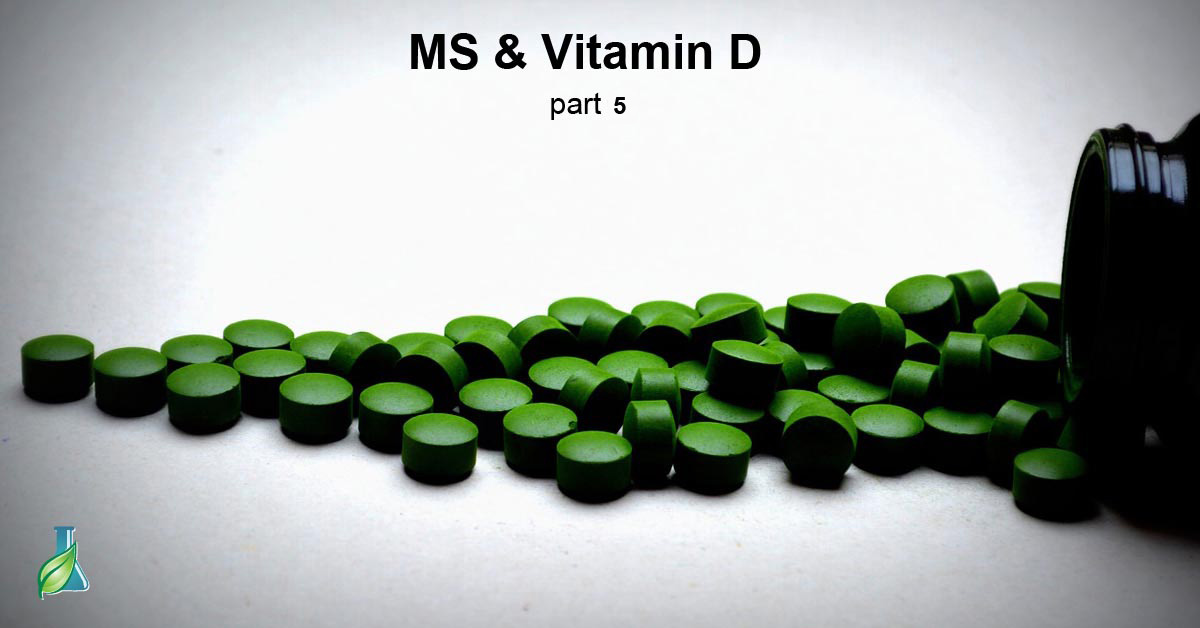
Vitamin D Supplementation
A simple blood test can be used to measure the amount of vitamin D a person has in their bloodstream. Laboratories have recently changed their recommendation of how much vitamin D a person should have in their system.
In the past, 10-20 ng/mL was considered a mild deficiency. Now laboratories suggest that normal levels are between 30-100ng/mL. Anything less than 20ng/mL is deficient. (In the US, the correct measurement is ng/ML, and 100nmol/L is equivalent to 40ng/mL. So, you can get the correct amount for the US reading by dividing the nmol/L amounts by 2.5.) [1]
According to Vieth in an article for the Journal of Steroid Biochemistry and Molecular Biology, evidence actually indicates that these levels should be quite a bit higher, particularly for those with MS.[2]
Researchers such as Vieth, along with Co-researchers, who wrote about their research in Alternative Medicine Review, have shown that vitamin D levels in sunny countries are typically 54-134ng/mL and that level may actually be optimal for proper health.[3] Some others, including Johan Moan, PhD and Alina C. Porojnicu, MD, PhD in the Norwegian journal Tidsskr Nor Laegeforen, have suggested the optimal level should be as high as 100ng/mL.[4] To achieve a level of 40ng/mL, as recommended by some, a dosage of approximately 4,000 IU of vitamin D a day should be taken for those who are not getting any sun. To achieve 60ng/mL, about a 10,000 IU a day dosage is needed for those who are not getting any sun.
Research conducted by R.P. Heaney, MD; and Co-researchers, and published in the American Journal of Clinical Nutrition has shown that in the average body of a healthy man, 3,000 to 5,000IU of vitamin D is used.5 If you are getting your dosage of vitamin D from sunlight, it is not possible to get too much of it. Vitamin D supplements, however, can produce toxic levels. However, according to Moan and Porojnicu, the only published toxicity level for vitamin D is 40,000IU a day for a long period of time.[5]
The best type of Vitamin D
There are two types of vitamin D; one is D3 and the other is D2. Vitamin D2 (ergocalciferol) is synthetic and is in fortified foods and certain supplements. It is present in plants but becomes active under irradiation. Biologically, it is less active. Higher doses of Vitamin D2 are toxic!
The good vitamin D is Vitamin D3 (cholecalciferol) that we obtain from UV-B sunlight.
In the past, regulators have not allowed vitamin D to be sold. The only form available until recently was vitamin D2, also known as ergocalciferol. As I said, Vitamin D2 is a synthetic and is only available by prescription. It is also expensive, and again, not the best form to take. On the other hand, vitamin D3 is cheap and easy to obtain. High doses, such as 5,000 IU a day is generally suggested for those just beginning to take the supplement.
When people are first diagnosed with MS, they should ask for their vitamin D level immediately. Of course, many people do not know this right off hand, so if you have been diagnosed with MS, it would be a wise idea to visit with your doctor to get your blood level tested. It is very common for a person’s first reading to be too low.
If the vitamin D level in a person is found to be really low, it can be corrected easily with one mega-dose of vitamin D3, followed by regular dosages, according to Terence H. Diamond, MD; and Co-researchers, in the Medical Journal of Australia, [6] Not all doctors do this, as some people are still uncomfortable about using these large dosages. The research shows that this is very safe, however, and this tactic really is the easiest way to correct the problem. If people have initial levels which indicate a severe deficiency, such as one of 5ng/mL or less, the research of Paul Lee, MD, PhD; and Co-researchers, indicates that one mega-dose of 600,000 IU has been shown to raise levels to approximately 30ng/mL. They reported these findings in an article in the American Journal of Medicine.[7] This is still probably half of the optimal level for people with MS. By looking at this data it is clear that even large doses of the vitamin are quite safe.
click here for MS and Vitamin D- part 6
1 In the US, the correct measurement is ng/ML, and 100nmol/L is equivalent to 40ng/mL. So, you can get the correct amount for the US reading by dividing the nmol/L amounts by 2.5.
2 Vieth R. Why the optimal requirement for Vitamin D(3) is probably much higher than what is officially recommended for adults. J Steroid Biochem Mol Biol 2004; 89-90:575-579
3 Grant WB, Holick MF. Benefits and requirements of vitamin D for optimal health: a review. Altern Med Rev 2005; 10:94-111
4 Moan J, Porojnicu AC. [The photobiology of vitamin D, a topic of renewed focus.]. Tidsskr Nor Laegeforen 2006; 126:1048-1052
5 Moan J, Porojnicu AC. [The photobiology of vitamin D, a topic of renewed focus.]. Tidsskr Nor Laegeforen 2006; 126:1048-1052
6 Diamond TH, Ho KW, Rohl PG, et al. Annual intramuscular injection of a megadose of cholecalciferol for treatment of vitamin D deficiency: efficacy and safety data. Med J Aust 2005; 183:10-12
7 Lee P, Greenfield JR, Seibel MJ, Eisman JA, Center JR. Adequacy of vitamin D replacement in severe deficiency is dependent on body mass index. Am J Med. 2009;122:1056-60
